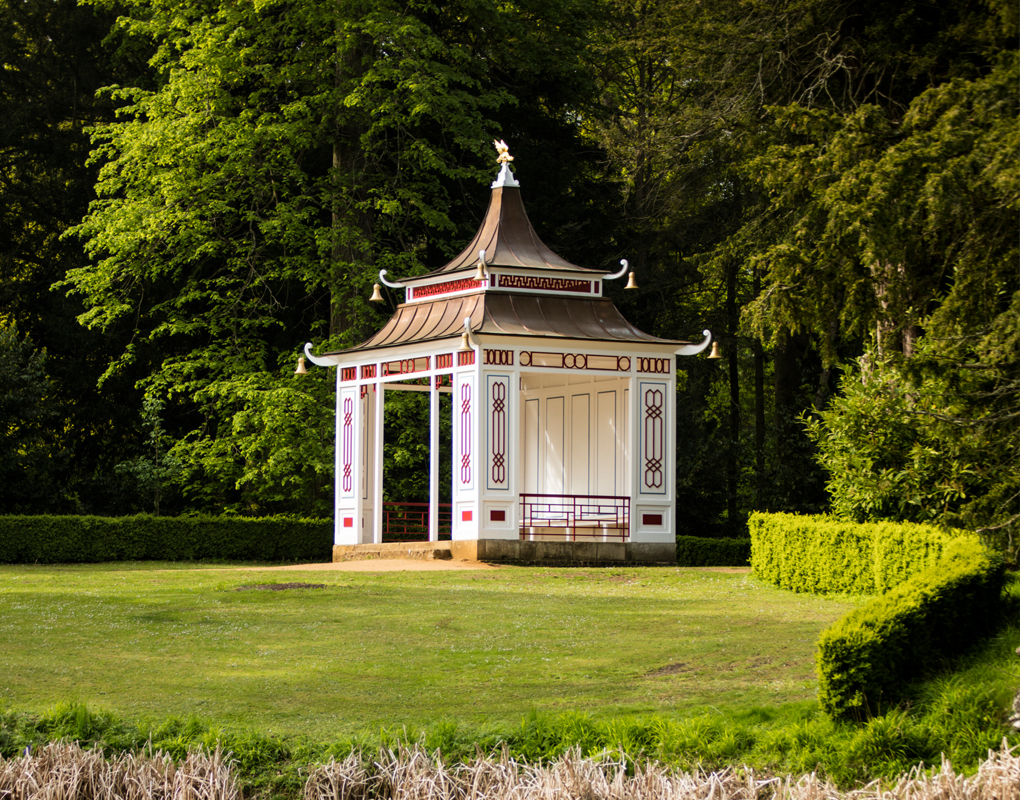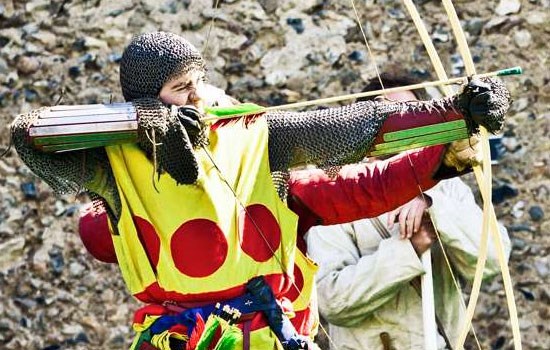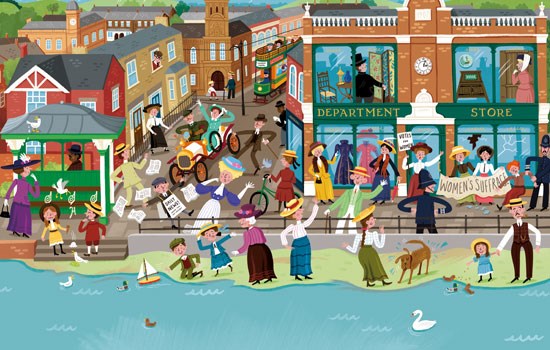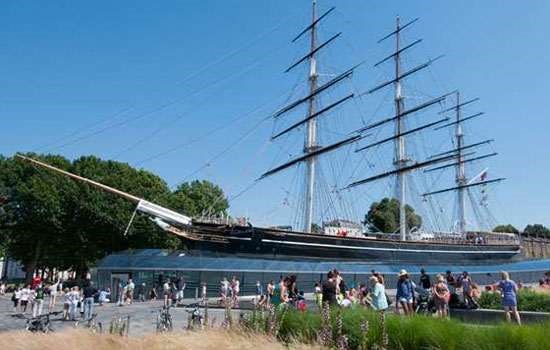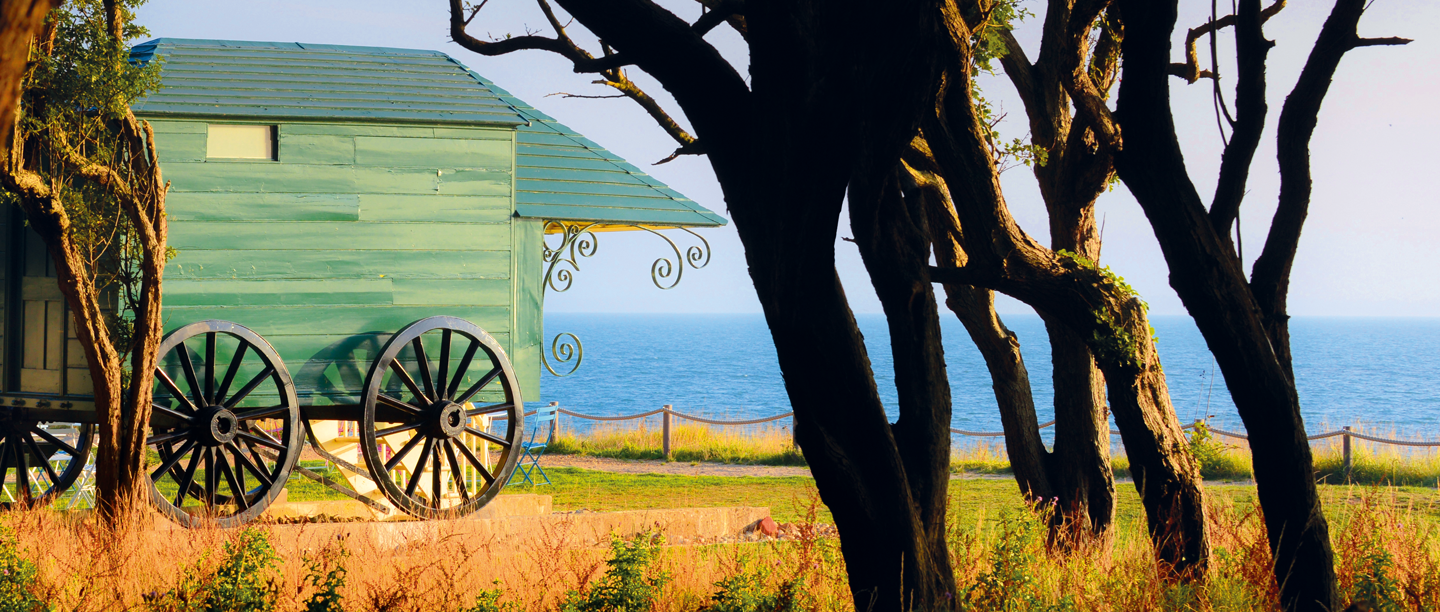
20 Questions Quiz
Test your knowledge of our sites' summer links with our 20 questions quiz from the Summer 2023 edition of your Members' Magazine.
-
1. Answer
Answer: It was Queen Victoria's bathing machine
To preserve her modesty while enjoying a dip at Osborne Bay, Queen Victoria had her own bathing machine constructed. These were first introduced in the 18th century when sea bathing became popular, and were a common sight on British beaches until the early years of the last century. Resembling large wooden sentry boxes on wheels, they were pulled down to the sea by horses, allowing the swimmer to change into their bathing dress before easing themselves down the steps into the water. Victoria's restored bathing machine can still be seen at Osborne today.
-
2. In the summer of 1575, which queen did Robert Dudley entertain at Kenilworth Castle?
Answer: Elizabeth I
Robert Dudley, earl of Leicester, was a favourite of Elizabeth I's and she honoured him with four visits to Kenilworth Castle. The last of these – in July 1575 – lasted for 19 days, the longest she ever remained in a courtier’s mansion. The ‘princely shows’ included fireworks that were heard 20 miles away and a garden created for her visit, which has now been recreated. Despite his efforts though, Dudley failed to win the queen's hand in marriage.
-
3. Which outdoor game did Charles I enjoy while imprisoned at Carisbrooke Castle?
Answer: Bowling
Bowling is one of the oldest English sports and has been played in a recognisable form for at least 500 years. It was particularly popular in the 17th century, when bowling greens were laid out in elaborate formal gardens. Charles I was a prisoner at Carisbrooke Castle on the Isle of Wight between 1647 and 1648. At the beginning of his captivity he had the freedom to explore the island, and an enclosure on the east side of the castle was converted into a bowling green for him.
-
4. Women's rights activist Emmeline Pankhurst was born in July of which year? A: 1837, B: 1858 or C: 1891
Answer: B
Pankhurst led the militant campaign for women’s right to vote in the early 20th century, better known as the ‘suffragette’ movement. A bill giving women equal voting rights to men eventually passed through Parliament in 1928, just weeks before Pankhurst's death that November.
-
5. Answer
Answer: Scarborough Castle
Set high on a commanding headland between sweeping bays, Scarborough Castle in North Yorkshire is flanked by two long stretches of sand. Its 12th-century great tower is the centrepiece of a royal castle begun by Henry II. It became one of the greatest royal fortresses in England and figured prominently in national events during the Middle Ages. Its buildings are mostly relatively recent additions to a site which, as a natural fortress, has been intermittently inhabited and fortified for nearly 3,000 years.
-
6. Garden designer William Andrews Nesfield described the gardens at which property as his 'monster work'?
Answer: Witley Court and Gardens
An ornate formal garden at Witley Court in Worcestershire was designed in the 1850s by William Andrews Nesfield, the leading garden designer of his day, to complement the remodelled mansion. Nesfield described the gardens at Witley Court as his ‘monster work’ and his additions included the grand formal parterres, and the Perseus and Andromeda fountain.
-
7. The Broadwalk at Walmer Castle was created for tennis and which other game?
Answer: Croquet
Walmer Castle in Kent is the official residence of the Lord Warden of the Cinque Ports. After the 2nd Earl Granville became Lord Warden in 1865, he employed a local nurseryman to revitalise the grounds. Granville's most important creation was the striking Broadwalk, a bold avenue leading from the castle moat and ending in a terraced lawn for croquet or tennis, just inside the paddock. Lined with yew or myrtle hedges, standard roses and ribbon flower border planting, it forged a new central axis that united the castle and its grounds.
-
8. Answer
Answer: Tynemouth Priory and Castle
The complex history of Tynemouth headland spans more than 2,000 years. It is dominated by the remains of a medieval priory, which was protected like a castle by walls, towers and a gatehouse. After the monastery was suppressed during the reign of Henry VIII (1509–47), Tynemouth headland became a coastal fortress and remained so until 1956, because of its strategic position at the mouth of the river Tyne.
-
9. What tourist-friendly facility opened in 1890, was renamed Bolsover Castle in 1950 and closed in 1978?
Answer: A railway station
The station, initially named Bolsover, was opened by Midland Railway in 1890. It was renamed Bolsover Castle on 25 September 1950 so that it wasn’t confused with a station a third of a mile away in Carr Vale called Bolsover South. The line was a single track and slowly became less frequented. The Bolsover Castle station was closed in 1978 and the area is now a public bridleway called the Stockley Trail.
-
10. A garden of which northern country house is thought to have been inspired by the quarries at Syracuse in Sicily?
Answer: Belsay Hall
The vast gardens that provide the magnificent setting for Belsay's castle and hall are largely the work of Sir Charles Monck. The garden he inherited from his father in 1795 included informal planting, a serpentine drive and a lake. Sir Charles, however, was influenced by the emerging Picturesque movement, which favoured the shaping of landscapes less conventionally beautiful and more wildly naturalistic. The quarry garden, created where stone was cut for the hall, has ravines, pinnacles and sheer rock faces, inspired by Sicilian quarries. Contrasting with the strict geometry of the hall, and linking it with the castle, it is a remarkable example of the Picturesque style, with a microclimate that makes it possible to grow tender plants beyond their normal northern limit.
-
11. A cave at Tintagel in Cornwall is named after which legendary figure?
Answer: Merlin
Twice a day, the receding tide below Tintagel Castle reveals a world of rockpools along with the impressive Merlin's Cave, which stretches deep into the cliffside. Tintagel was first linked to the legend of King Arthur by the 12th-century writer Geoffrey of Monmouth, who named it as the place where King Arthur was conceived. According to Tennyson, Merlin carried the infant Arthur to safety through the cave.
-
12.The sun rises behind which stone at Stonehenge during the summer solstice?
Answer: The Heel Stone
Stonehenge was built to align with the sun on the solstices. On the summer solstice, the sun rises behind the Heel Stone in the north-east part of the horizon and its first rays shine into the heart of Stonehenge. On the winter solstice, the sun sets to the south-west of the stone circle.
-
13. Answer
Answer: The Queen Mother
The Queen Mother's Garden at Walmer Castle in Kent was created for the Queen Mother, on the occasion of her 95th birthday, by leading garden designer Penelope Hobhouse. The Queen Mother declared, 'I have been given many flowers before but never a garden.' The garden, which opened in July 1997, is designed along classical lines, reflecting Hobhouse's interest in Islamic gardens. The result is a tranquil combination of still water, rich planting and cool shade.
-
14. Can you unscramble the name of this grand Essex mansion, where a cricket pitch was laid out in 1842? GREYHOUND DUDE EASED ANNALS
Answer: Audley End House and Gardens
The fifth Lord Braybrooke, Charles Neville, was a keen cricketer, and he laid out the cricket pitch on the lawn in front of Audley End House and Gardens in 1842. The diaries of Joseph Romilly, a frequent visitor to the house, recorded many cricket matches. On Friday 29 August 1845 he wrote, ‘The hero of the day in every sense was Charles Neville: he was this day 22 and on his birthday got 111.’ Audley End won the match by 230 runs. The cricket pitch is still used by Audley End and Littlebury Cricket Club.
-
15. The Target House in the garden of Brodsworth Hall is part of an area that was used for what sport?
Answer: Archery
The Target House, originally built in 1866 as the Archery House, was a place of rest and relaxation for the Thellusson family (whose ancestor Peter Thellusson had purchased the estate in 1791), to shelter in the heat of the day and enjoy refreshments during archery practice. Archery on the Target Range would have been a social occasion, with the family inviting their friends to visit for an afternoon tournament. However, its purpose changed during the Second World War when the hall was requisitioned by the army and soldiers would use the long range nearby for target practice, hence the change in name.
-
16. What is the name of the ancient Celtic festival that marked the end of summer?
Answer: Samhain
Halloween likely has its roots in the ancient Celtic festival of Samhain, which marked the end of summer and the harvest. It was this time of year where people believed the boundary between the worlds of living and dead became blurred, and was when the souls of the dead were said to revisit their homes.
-
17. What was unusual about the tennis court at Down House in Kent?
Answer: It is hourglass-shaped
The tennis court at Down House – Charles Darwin's family home in Kent – is a rare example of an hourglass-shaped tennis court. The shape of the court followed the specifications of an 1874 ‘sphairistikè’, the first commercially packaged version of lawn tennis. The fashion for this shape was soon replaced with the rectangular courts we are familiar with today. Emma Darwin wrote in September 1881 that ‘we are boiling over with schemes about the tennis court’, and it was built in November that year. Today you can still see the concrete surface but there’s no net.
-
18. The gardens at Eltham Palace feature London's oldest working what?
Answer: Bridge
Visitors to Eltham Palace and Gardens in Greenwich can still cross the moat by using the North Bridge, which dates from the late 15th century and consists of four arches with stone-faced sides. From the 14th to the 16th century, Eltham was an important royal palace, where monarchs often stayed and hunted in the surrounding parks. After centuries of neglect, Eltham was leased to Stephen and Virginia Courtauld in 1933, who built an up-to-the-minute house here that incorporated the great hall. The result was a masterpiece of 20th-century design.
-
19. The reign of which 20th-century monarch is sometimes seen as an untroubled 'Indian Summer'?
Answer: Edward VII
The brief but unexpectedly successful reign of the flamboyantly enthusiastic Edward VII (r.1901–10) is sometimes seen as an untroubled ‘Indian Summer’, an appendix to the Victorian age, with great country houses at their apogee and an ever-growing middle class. Living conditions for the urban and rural poor, however, were often squalid and forces of radical change were already at work. The social reforms of the Liberal government of 1906–14 laid the foundations of what would become known as the welfare state.
-
20. Answer
Answer: A c.1760
The summer house was built around 1760, possibly to the designs of Sir William Chambers, and subsequently remodelled in 1876. The building, along with a nearby Chinese-style bridge, was among the additions and enhancements to Wrest Park's grounds made by Jemima, Marchioness Grey (1723–97). She also commissioned Lancelot ‘Capability’ Brown to work on the estate but was careful not to compromise the character of the existing elegant gardens.
You may also be interested in





